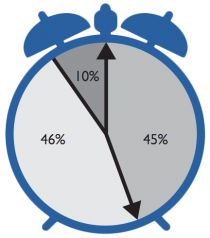A leading annual survey report in the U.S., “Changing Course: Ten Years of Tracking Online Education in the United States” indicates some similarities between the U.S. and Canada in the landscape of higher education online.

Some key report findings include:
- Over 6.7 million students were taking at least one online course during the fall 2011 term, an increase of 570,000 students over the previous year.
- Thirty-two percent of higher education students now take at least one course online.
- Seventy-seven percent of academic leaders rate the learning outcomes in online education as the same or superior to those in face-to-face.
- Only 30.2 percent of chief academic officers believe that their faculty accept the value and legitimacy of online education – a rate that is lower than recorded in 2004.
To get a quick overview, see the infographic summarizing the report findings.
We don’t have ten years of comparable Canadian surveys of online education, but there is an interest in gathering this data in the future. Last year, BCcampus participated in a study of B.C. and Alberta higher ed which indicated that, as in the U.S., online education here is growing and will continue to grow at a significant rate for the foreseeable future.
BCcampus also recently surveyed B.C. students and found that most of those respondents (61%) prefer taking online courses over face-to-face ones, and strongly support taking courses at other institutions.
The U.S. survey, a collaborative effort between the Babson Survey Research Group and the College Board, is the leading barometer of online learning in the United States. Based on responses from over 2,800 academic leaders, the survey report revealed that the number of students taking at least one online course has now surpassed 6.7 million. Higher education adoption of Massive Open Online Courses remains low, with most institutions still on the sidelines.
The complete survey report, “Changing Course: Ten Years of Tracking Online Education in the United States” is available at The Sloan Consortium.
Posted by Tori Klassen
